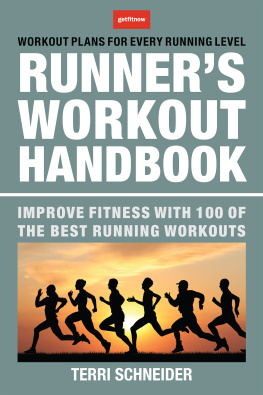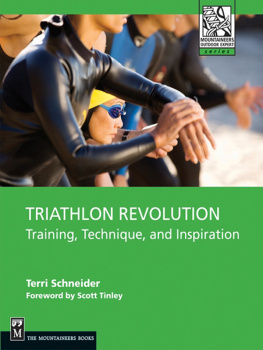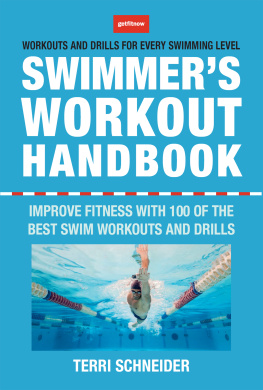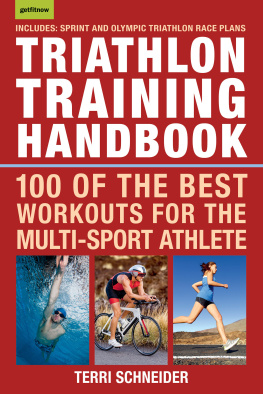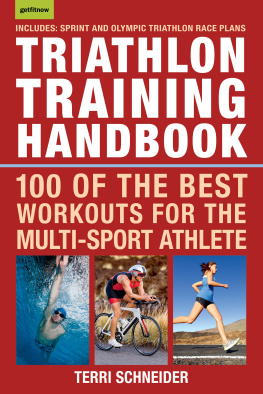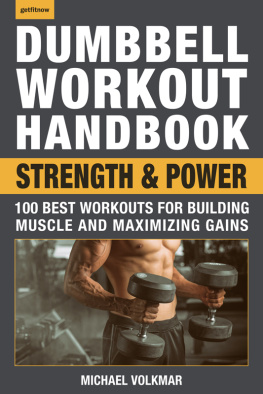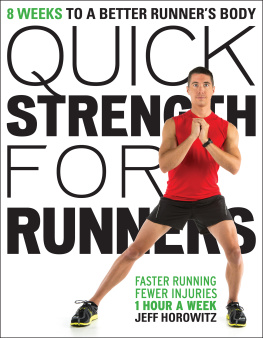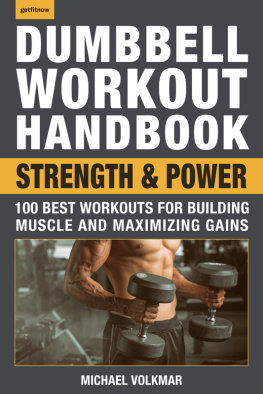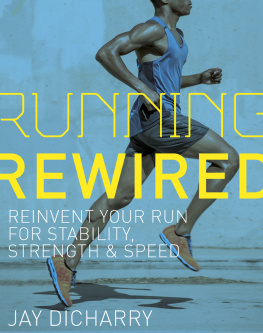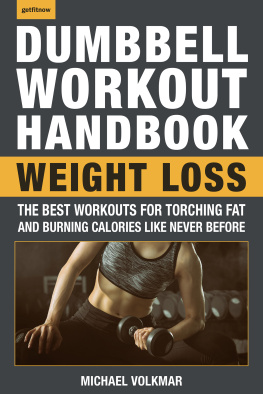
Your health starts here! Workouts, nutrition, motivation,
community... everything you need to build a better body
from the inside out!
Visit us at www.getfitnow.com for videos, workouts,
nutrition, recipes, community tips, and more!
The Runners Workout Handbook
Text Copyright 2017 Terri Schneider
Library of Congress Cataloging-in-Publication Data is available.
ISBN: 978-1-57826-697-5
All rights reserved. No part of this book may be reproduced, stored in a
retrieval system, or transmitted, in any form or by any means, electronic or
otherwise, without written permission from the publisher.
Book design by Carolyn Kasper
Printed in the United States
10 9 8 7 6 5 4 3 2 1
CONTENTS
Quick Program:
10 to 40 Minutes per Day
Build Program:
20 Minutes to 1 Hour per Day
Endurance Program:
30 Minutes to 1 Hour 30 Minutes per Day
BENEFITS OF FITNESS RUNNING

W hether you are a beginning runner interested in refining your running program, or a veteran looking to take your training to the next level, the weekly plans and diverse run sessions in The Runners Workout Handbook are for you.
Running is an efficient and cost-effective means to gain fitness, and the benefits are broad reaching. Running not only helps prevent obesity, high blood pressure, heart disease, and other diseases associated with an inactive lifestyle; it has also been shown to increase cardiovascular efficiency and bone mass, as well as mental and emotional wellbeing. Whether we perceive our run workout to be bad, good or in between, one thing is certainwe always feel better after our run. Studies have shown that even a minimal amount of running per week will reduce tendencies toward anxiety, stress, and depression while increasing our quality of sleep and overall mood and mental focus.
One of the reasons that running is an effective means to gain fitness is because it is a weight-bearing activity. Though we gain tremendous benefits from this type of stress, it is also the reason why executing an effective training program is so important. The stress of running benefits us, but it can also cause injury if not executed methodically. Guidelines, weekly plans, and run sessions in The Runners Workout Handbook will guide you in executing your diverse and solid training program.
Run benefits are best realized within the diversity in intensity, recovery, and distance within each session and within a weeks time. This diversity within a workout, and within a week of training, inclusive of recovery days, are three of the aspects that trigger our body to grow stronger, faster, and more proficient. Another important element is consistency of training over many weeks. Whether you are refining your current training plan or expanding your training, The Runners Workout Handbook supports your optimal training effect.

RUNNING FORM

W hen you take off running, you will move in a way that feels natural for you. Though natural, your style may or may not be the most efficient. Working toward proper running form will help you run your best, and will also help you maintain form when fatigue sets in.
Proper Alignment + Proper Foot Impact = Efficient Form
There are various schools of thought on effective running form. Some elite distance runners will use a slight forward lean technique that keeps their center of gravity forward to induce constant momentum. Most efficient distance runners tend to exhibit a running form for long distance running that looks something like this:
- Follow-through of the leg after push-off is relaxed through the hip area, allowing the upper leg, knee, and foot to swing through with ease and quickly set up in front of the body.
- In long distance running the upper leg flexes and then extends while the lower leg follows suit; the foot ultimately touches down basically flat , allowing the full impact of the body to be taken by the entire foot. This eliminates the possibility of braking and losing momentum (which a heel strike can cause). Landing on the toes over the long haul can create enormous stress on the knees, calves, and Achilles and is generally avoided as well. Initial touch down is likely directed toward one part of the foot prior to the foot landing flat. A full foot impact allows all of the 26 bones in each foot to share the body weight. Landing flat spreads out the stress of the impact and helps maintain forward momentum while setting up for toeing off. The push-off is executed through the big toe area.
- When the entire foot is in full impact, a plumb line could be dropped from shoulder to hip to foot and form a straight line. The back is comfortably straight. If the hip is behind the foot at full impact, one is overstriding. When increasing pace, sprinting, or running faster than comfortable distance pace, it is common for runners to impact more on their forefoot.
- With the exception of running uphill or other specific types of off-road terrain, push-off when running long distances is a natural reaction from open hips, arm swing, and forward momentum, not a forced motion. For more speed, pump the arms, relax the hip joints, and open for a fluid, longer stride or a quicker turnover. Open and relax for speed.
- Face is loose, the jaw is relaxed, and mouth open.
- Hands are in a slack, comfortable fist. Lower arms are carried with an approximate 90-degree, or slightly less, angle at the elbow joint. The arm swing is generated from the relaxed shoulder joint, and the arm follows the swing. While running for extended periods, it is natural for the lower arm to slightly cross the side and front of the body.
- Breathing is relaxed and natural as air flows through both mouth and nose. Abdomen and chest support the spine while remaining open to allow air to move freely.
Evaluate Your Form
If your feet slap when they hit the ground, you may be heel striking. This can cause foot, ankle, and leg stress as well as a decrease in forward momentum. If your head moves up and down significantly when you run, you are bouncing and need to work on smoothing out your stride and foot touch down. Leaning too far forward or backward can cause excessive stress upon impact. If your shoulders are carried too high, you will generate tension in your upper body that can be transferred to the lower body.
Have a friend or your coach video-tape you running, focusing on:
- Your feet from the front and rear
- Your whole body from the front and rear and from each side
- Your form while running slowly
- Your form while striding out at 90 percent speed
Changing your running form takes time and effort and the changes will come slowly if you are consistent in your efforts.
Stride Length + Turnover = Speed
When executing the higher intensity intervals outlined in this workbook, think about combining the most efficient stride length for your leg length, with your turnover (stride rate) or cadence. To increase speed, either lengthen your stride or increase your turnover, or both. To achieve your best stride length, you will need to be flexible in your low back, hips, groin, and hamstring areas. One of the reasons we lose speed when we age is because our stride length shortens as muscles and tendons become less pliable. To maintain speed, we need to stay on top of our flexibility.

